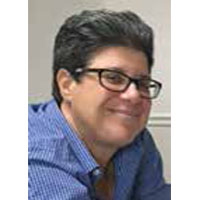
Michele Karlsberg: In The Lede to Our Undoing, Donald Mengay takes us to 1970s rust-belt America. It was the era of civil rights, women’s rights, and gay rights, and saw the birth of the modern environmental movement. In the book, twins Jake and Wren are raised in the white-flight suburb of Laurentine, not far from an industrial town ironically named the Forest City. The twins’ parents, Harry and Florrie, do their best to keep their offspring on the straight and narrow, according to principles common today in MAGA America, before it got the name. But the two are not good at coloring inside the lines. Wren falls in love with an African American youth named Donald, and Jake falls in love first with Romeo and then Peacoat, with traumatic results. Their story is told by the family mutt, Molly, whose outsider status offers the reader a unique view on human culture.

Michele Karlsberg: When did you start working on The Lede to Our Undoing?
Donald Mengay: The process took decades really. In a sense, I began writing it in the early 1990s. I’d studied creative writing in college and had a desire to go back to it, and I met a poet named Lynn McGee, who became my writing partner for a time. Each week we traded our work and critiqued it. At one point, I sent her a short story about a person who was speaking from the grave––I came up with the idea after helping a friend bury her cat in the traffic circle near a park in Brooklyn. When we were finished, I couldn’t help thinking the cat had landed in the opposite of a peaceful resting place given all the cars whipping mad-dash around the circle. I wondered what the cat would say if she were sentient and able to speak. When I gave the story to Lynn, she remarked that the voice in that story was truly unique, and new for me. It became a seed in the back of my mind over the next decade and a half. Clearly a long germination!
Michele Karlsberg: Why choose a dog for a narrator? Wouldn’t a human narrator have been just as effective––or more so?
Donald Mengay: Well, a human narrator wouldn’t have given me the chance to analyze human foibles nearly as easily because a human narrator would have been too close to the problem, so to speak. As a nonhuman animal, Molly has a perspective no human “animal” does. What’s more, because Molly belongs to the family at the heart of the story––a family that serves as an allegory of humans generally––she has an insider’s view. Which is why a donkey or a horse would not have served the purpose as well.
Dogs and cats, and some birds, live with humans and know them intimately. They observe us and know our strengths and weaknesses. What sets a dog apart is it lives, in part, on the end of a leash, or as the English say, a lead––hence the play on words in The Lede to Our Undoing. I wanted to play with the notion of a leash or lead as a metaphor for the way all of nature is tethered, or leashed, to the actions of human beings. In that way, Molly herself is allegorical. She even remarks a couple times, “Nature and I are one.” That she is abused by the family in the story references the way we’re abusing nature and the environment, and have been for many centuries.
For more information on Donald Mengay and his work: https://www.donaldmengay.com
Michele Karlsberg Marketing and Management specializes in publicity for the LGBTQ+ community. This year, Karlsberg celebrates 34 years of successful marketing campaigns. For more information: https://www.michelekarlsberg.com
Words
Published on September 7, 2023
Recent Comments